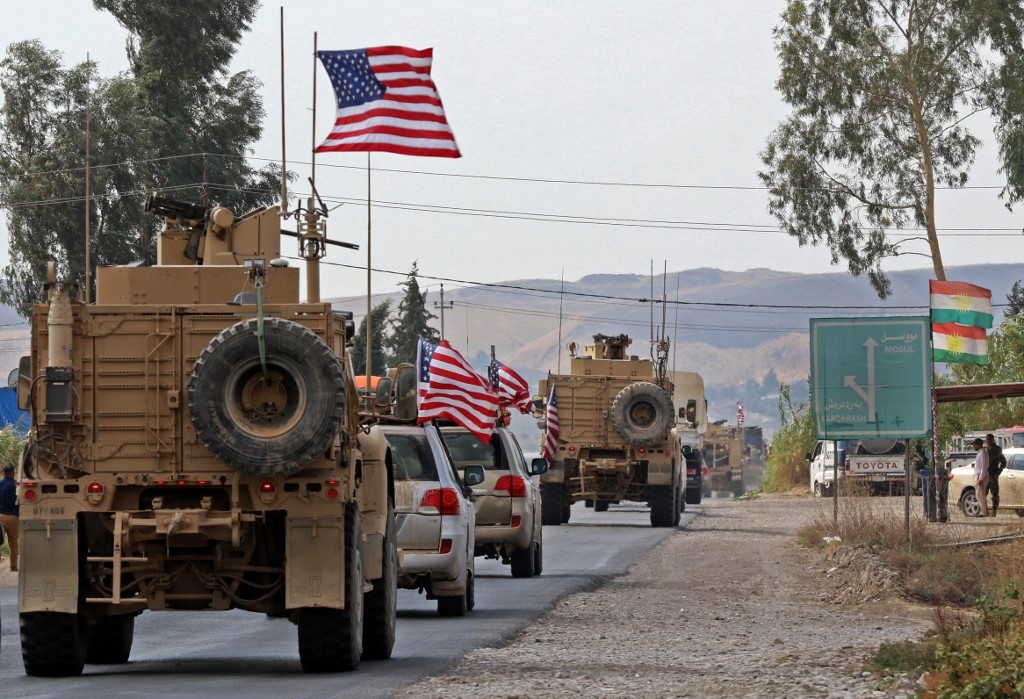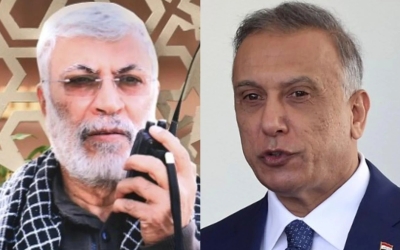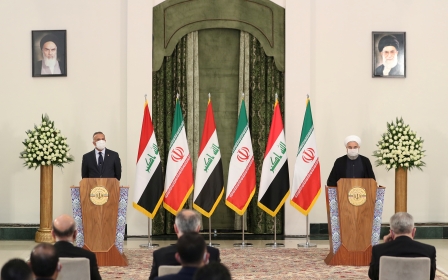US to pull 2,200 troops from Iraq, leaving 3,000 behind to fight Islamic State

The United States plans to withdraw 2,200 troops from Iraq, according to a top US commander, in a long-awaited move from the Trump administration - which has for years promised to reduce Middle East deployments.
General Kenneth McKenzie Jr, head of the US military's Central Command, said on Wednesday that US troop numbers would be reduced to 3,000 from 5,200. The drawdown is scheduled to take place this month.
During his remarks, McKenzie stressed that the remaining American troops would focus on helping Iraqi forces eradicate the Islamic State group, which he referred to by the acronym ISIS.
"This reduced footprint allows us to continue advising and assisting our Iraqi partners in rooting out the final remnants of ISIS in Iraq and ensuring its enduring defeat," McKenzie said.
The general, who alluded to the drawdown plans last month, said Iraq's military was now sufficiently prepared to face the IS group with less US assistance.
"This decision is due to our confidence in the Iraqi security forces' increased ability to operate independently," McKenzie said. "The US decision is a clear demonstration of our continued commitment to the ultimate goal, which is an Iraqi Security Force that is capable of preventing an ISIS resurgence and of securing Iraq's sovereignty without external assistance."
Middle East Eye asked the Pentagon whether the 2,200 troops would be brought back to the US or redeployed elsewhere, but a spokesperson declined to comment.
Since assuming office in 2016, President Donald Trump has promised to bring American troops home, but for the most part the number of deployed troops has either increased or stayed at about the same levels as those deployed during the end of the Obama administration.
Islamic State group: 'Threat is still there'
The recently announced troop drawdown comes three weeks after US President Donald Trump met Iraqi Prime Minister Mustafa al-Kadhimi in Washington.
Following the meeting, Trump told reporters that his goal was to eventually withdraw all US troops from Iraq.
"So at some point, we obviously will be gone," Trump said at the time. "We look forward to the day when we don't have to be there, and hopefully Iraq can live their own lives and they can defend themselves, which they've been doing long before we got involved."
Still, Prime Minister Kadhimi reiterated the need for American military assistance to help fight remnants of the IS group, despite a parliamentary order in January - before he took office - that called for all American troops to be withdrawn following the US assasination of top Iranian general Qassem Soleimani at an airport in Baghdad.
"ISIS sleeper cells are still operating in Iraq," Kadhimi warned following his meeting with Trump in August. "The threat is still there."
While much less of a threat than it was several years ago, the IS group remains capable of launching a cheap, low-tech and largely rural campaign of violence that continues to cost lives, according to American and Iraqi counterterrorism officials.
Despite Trump's repeated 2018 announcement of having defeated the group at "almost 100 percent", it was never fully eradicated, and the number of IS group attacks began to increase again earlier this year.
Leaving 3,000 troops in Iraq will bring US force numbers down to roughly the same level they were in 2015, when the US had just begun its campaign against the IS group, which at the time controlled a third of the country.
Campaign to bring troops home
Trump and the White House have yet to comment on the troop withdrawal, but the administration has struggled to meet its campaign promise to pull US forces out of the Middle East.
After an increase in deployments following Trump's inauguration in January 2017, the administration in September of that year stopped publishing official data on the number of US troops deployed in Iraq, Syria and Afghanistan, as well as those "deployed in support of contingency operations", citing a need to "protect our forces".
In October 2019, to the dismay of several top US generals, the Trump administration did decide to pull 2,000 troops out of Syria in a move that was seen by critics as an abandonment of Kurdish allies who had been key in helping the US fight the IS group.
The withdrawal opened the doors for Turkey to begin its military advance against Kurdish forces along the Syrian-Turkish border.
Meanwhile, the military leadership has been supportive of keeping US troops levels in Iraq at a minimum amid several attacks this year on American assets in the country.
In March, three US coalition soldiers, two of them Americans, were killed during an attack on an Iraqi base. Fourteen others were wounded. Three months earlier, just days after the US killed Iranian general Soleimani, an operation launched by Iran left 100 US troops hospitalised with traumatic brain injuries.
Since then, the US has consolidated its troops in Iraq in fewer bases. In August, US troops withdrew from the Taji military base near Iraq's capital, Baghdad, because it had been repeatedly targeted by Iran-backed militias.
Iraq, allies with both the US and Iran, has tried to be a neutral player between the two rival countries, as tensions continue to simmer.
Middle East Eye delivers independent and unrivalled coverage and analysis of the Middle East, North Africa and beyond. To learn more about republishing this content and the associated fees, please fill out this form. More about MEE can be found here.







